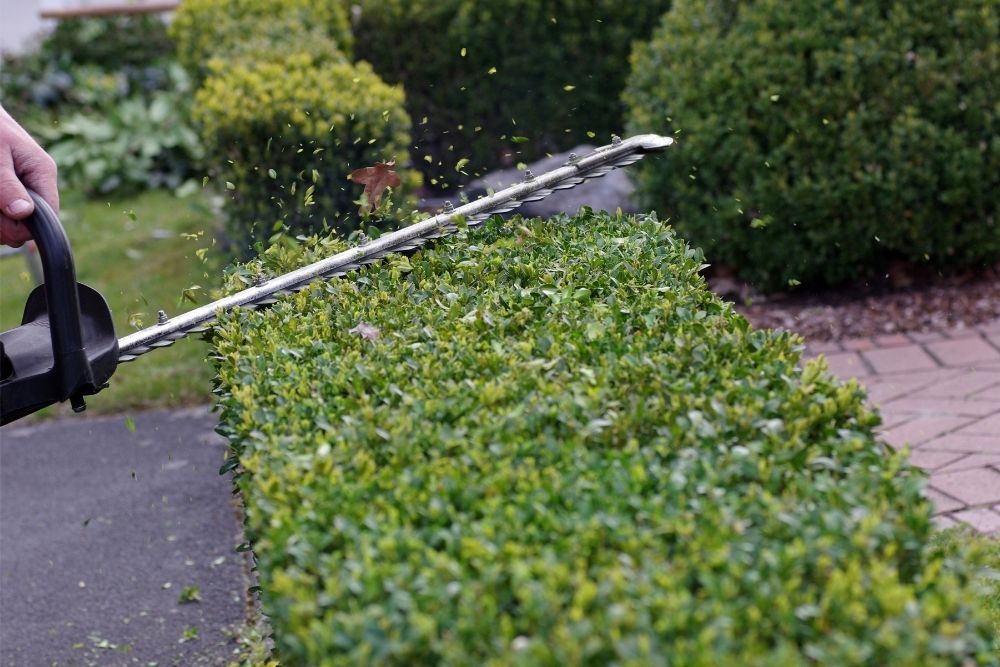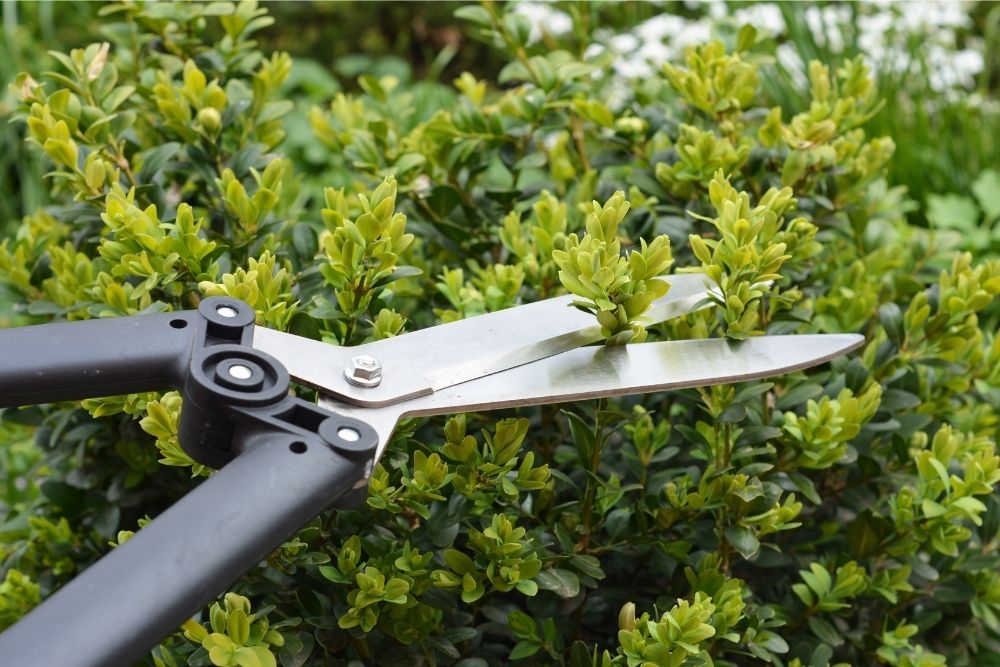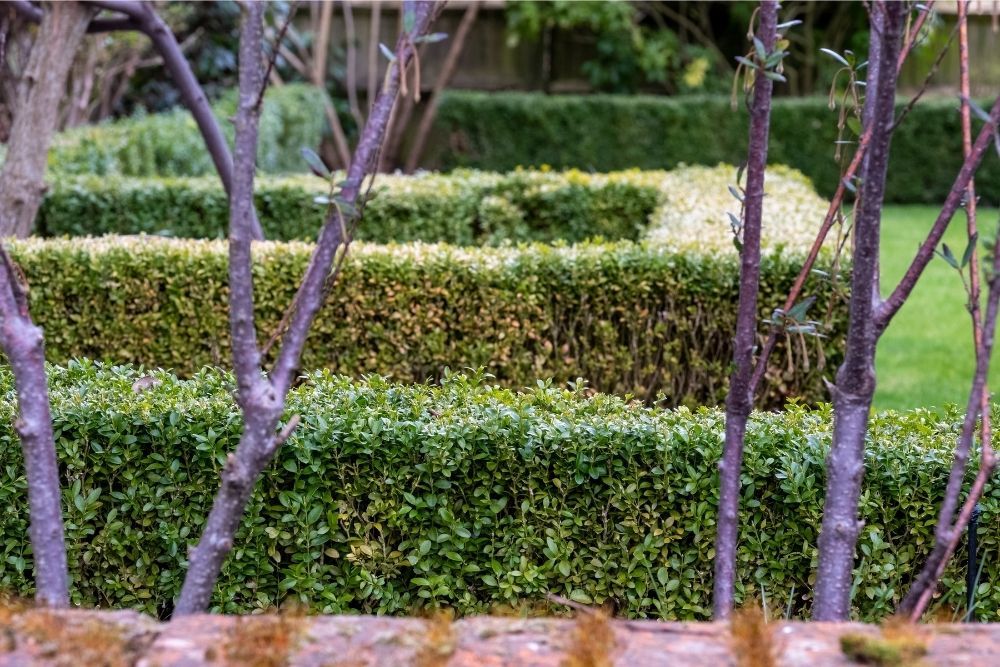
You need to prune box hedges to keep them looking prim and proper. But you can’t just hack at them any time of year. Well, you can, but I’d advise against it. In this article, we’ll discuss how and when to cut your box hedge, when you can give it a little trim, and how to prune a box hedge suffering from box blight.
When Should I Prune Box Hedges?
Pruning your box hedge twice a year will encourage new growth, which will make it easier to shape. Resist the temptation to prune your box hedge any earlier than the end of May. Your hedge won’t stand a chance of sprouting new growth if it’s frosty, so make sure all signs of frost have disappeared.
Your hedge will be ready for a second prune in early September. Pruning in September gives your box hedging time to regenerate before the cold weather sets in again. New growth has to be established before the winter. Otherwise, it’ll die, and you’ll be left with a sad-looking hedge.
Tips on Trimming Your Box Hedge
Before you let your creativity run away with you, let’s discuss when the best time to trim your box hedging is and how to do it.
When to Trim Box Hedges
Dust off your garden shears at the end of spring and give your box hedging a good trim. Cut several leaves after the start-point of the new growth. Just watch out for dark green leaves – this is older growth; you don’t want to cut this!
Box hedging loves some sun, but too much heat can burn its leaves. To lessen the likelihood of leaf annihilation, trim your box hedge when it’s cloudy. But avoid the rain! Pruning in wet conditions can introduce box blight.
How to Trim Box Hedges
To give your hedge a flat surface at the top, keep the blades of your shears horizontal. For the most detailed designs, swap out your shears for secateurs or scissors.
Unless you plan to spend the whole month trimming your hedge, you’ll have some damaged leaves after. Don’t be alarmed if these turn an ominous shade of brown and fall off; this encourages new growth.
How Long Do Box Hedges Take to Grow?
If your shaping didn’t go exactly to plan, you might be wondering how long it’ll take for nature to hide your mistakes. Well, your box will grow between 6-9 inches a year as long as the conditions are favourable.
If your hedge is positioned in a shady spot or is planted in nutrient-lacking soil, you can expect less growth.
Help – Box Blight!
Box blight is a fungal disease that affects box hedges specifically. It damages the plants by weakening them. It’ll turn their leaves brown and, after a short while, they’ll fall off.
Box blight is particularly troublesome in warm conditions; it just loves to get all hot and steamy! If you’re worried your hedge has a bad case of box blight, check it for:
- Brown leaves that are falling off
- Bare patches
- Young stems dying back
- White splotches on leaf undersides
- Black streaks on young stems
If your hedge is suffering from box blight, cut out the areas that have been affected most. Choose a dry day to do this, and really have at it. When removing box blight, more is more.
Clean your tools after and brush off any detritus left behind from the pruning. This will reduce the likelihood of further spread.
Garden Shears at the Ready
Box hedging benefits from pruning, but only at specific times of the year. Refrain from intervening before the end of May, then cut again in September. Box hedging is ready to trim at the end of spring. But watch out for older growth, and stick to cloudy, dry days.
Keep your shears horizontal for a crisp looking top, and don’t stress when damaged leaves drop. Just beware, browning leaves, dark streaks, light splotches, and stem death can be signs of box blight. Giving your diseased hedge a harsh prune may be enough to save it.



